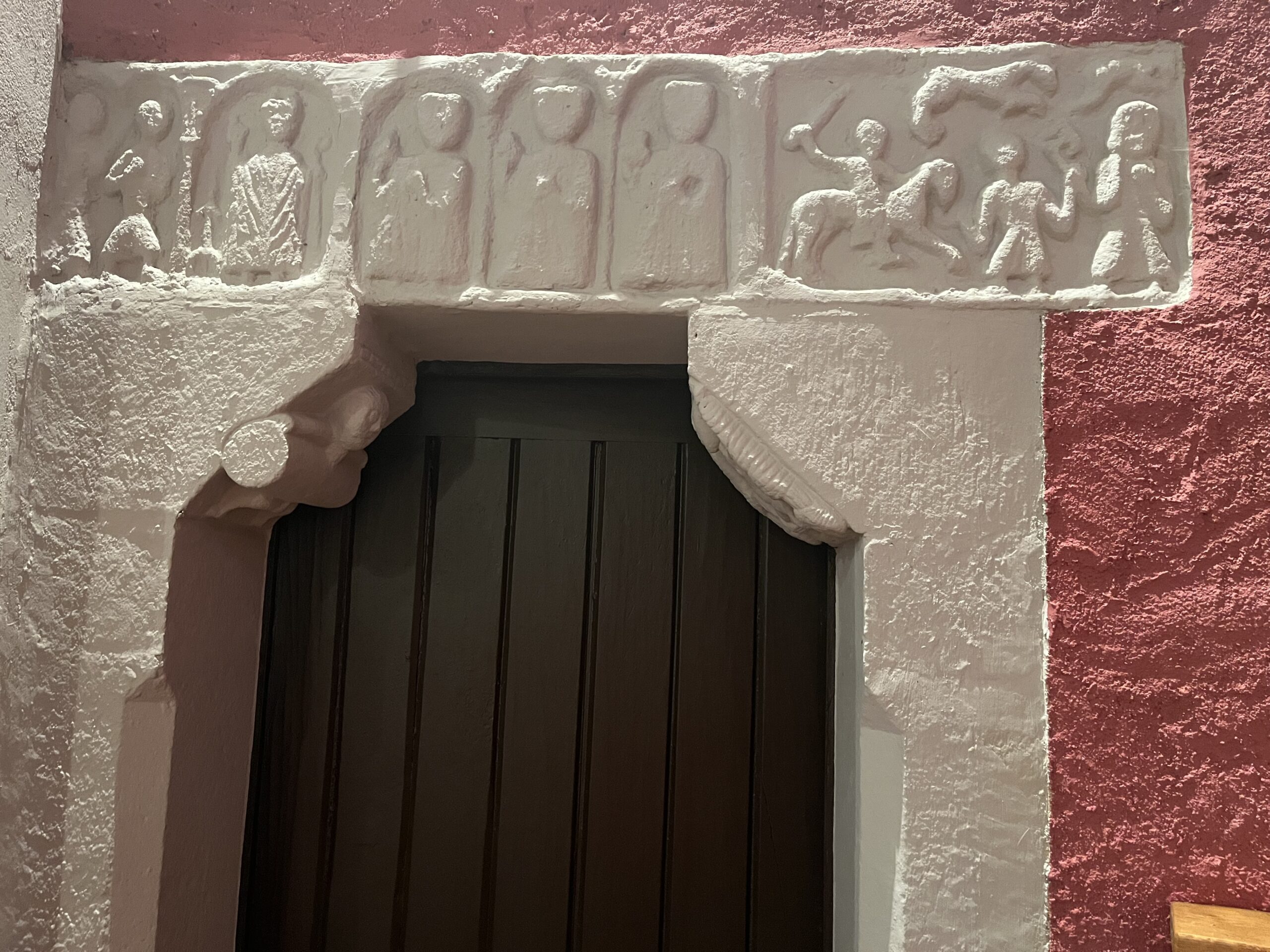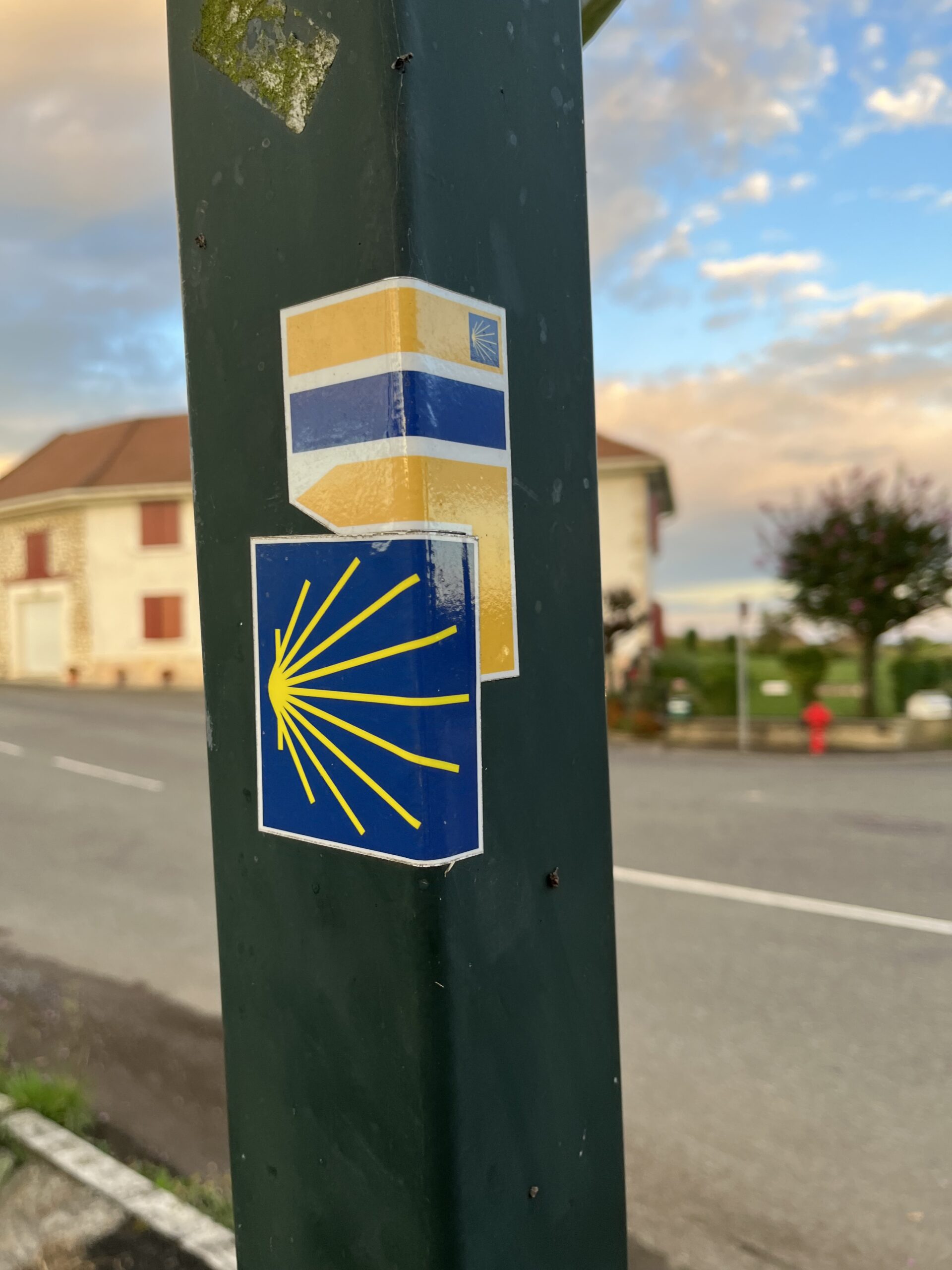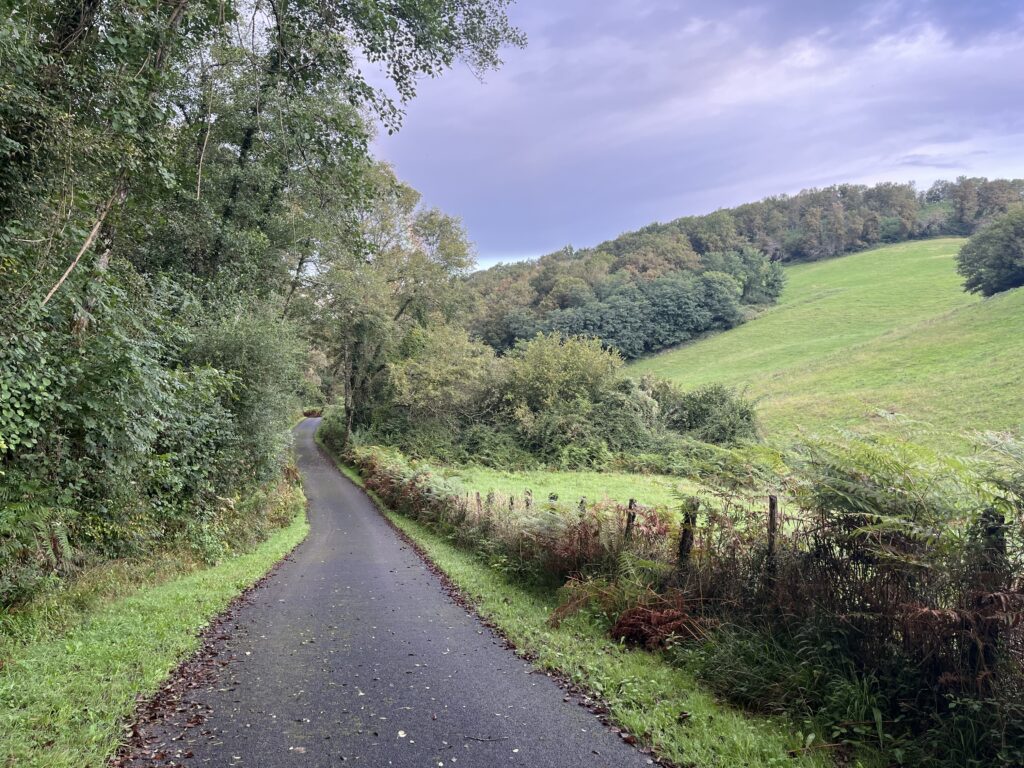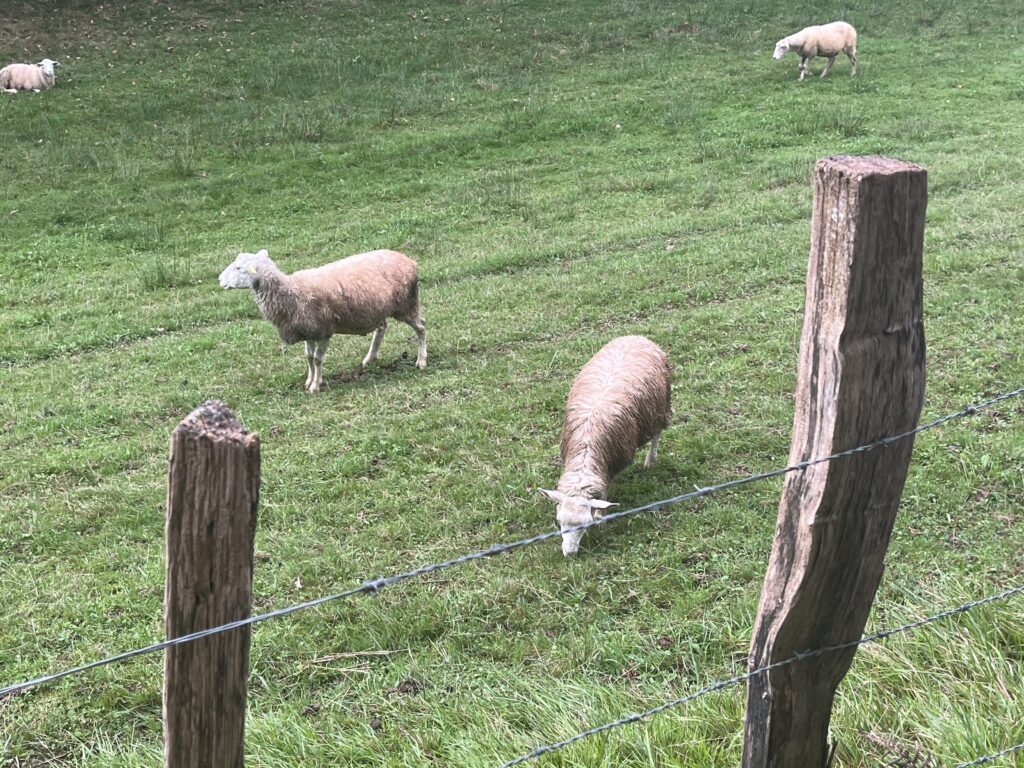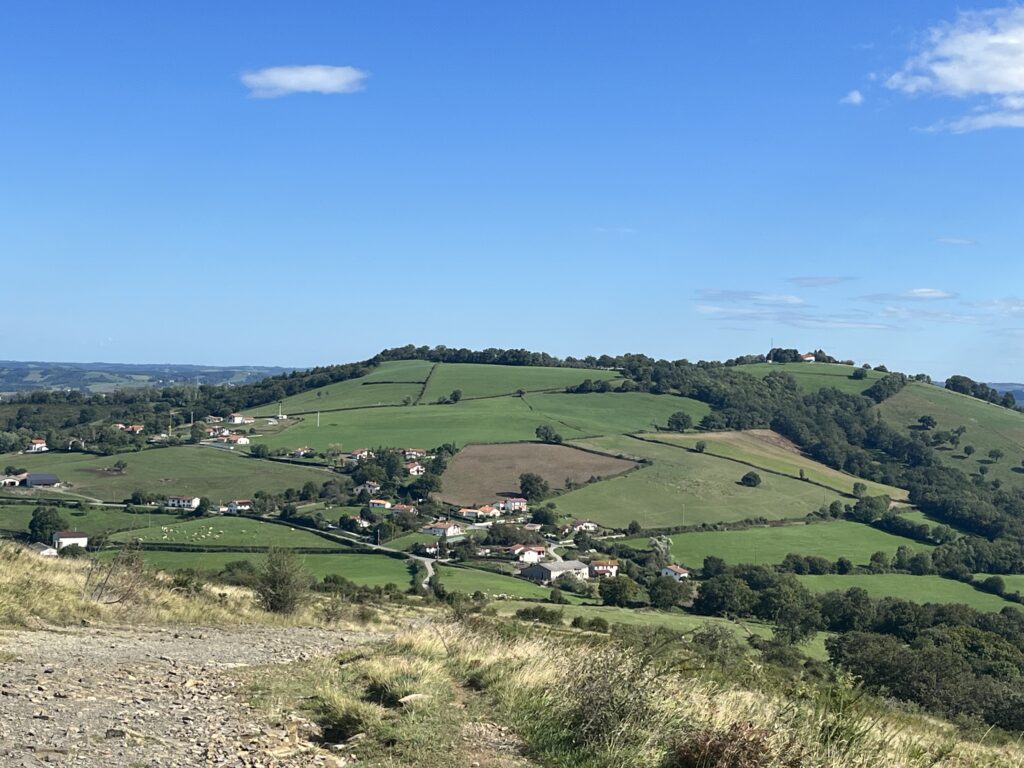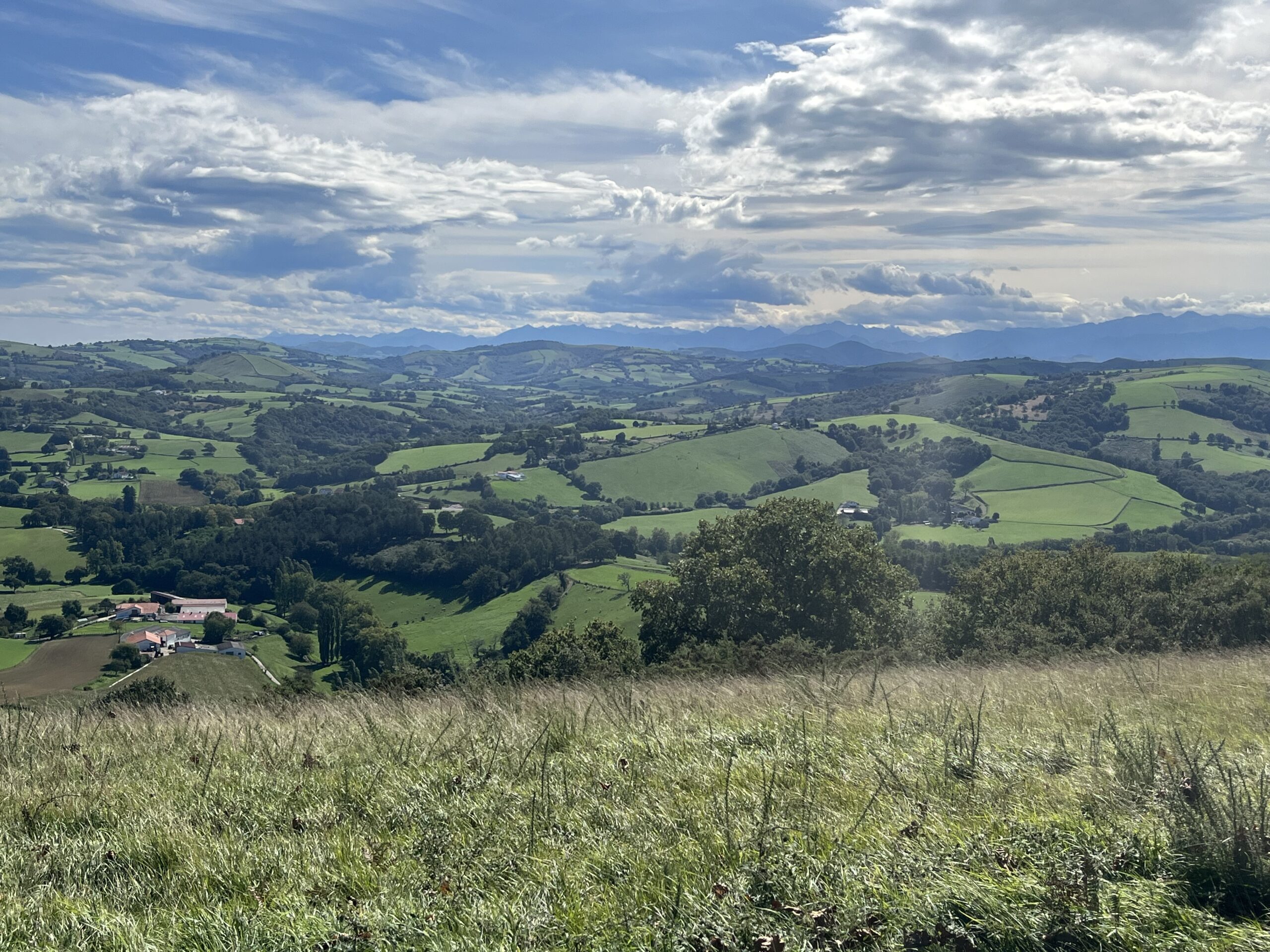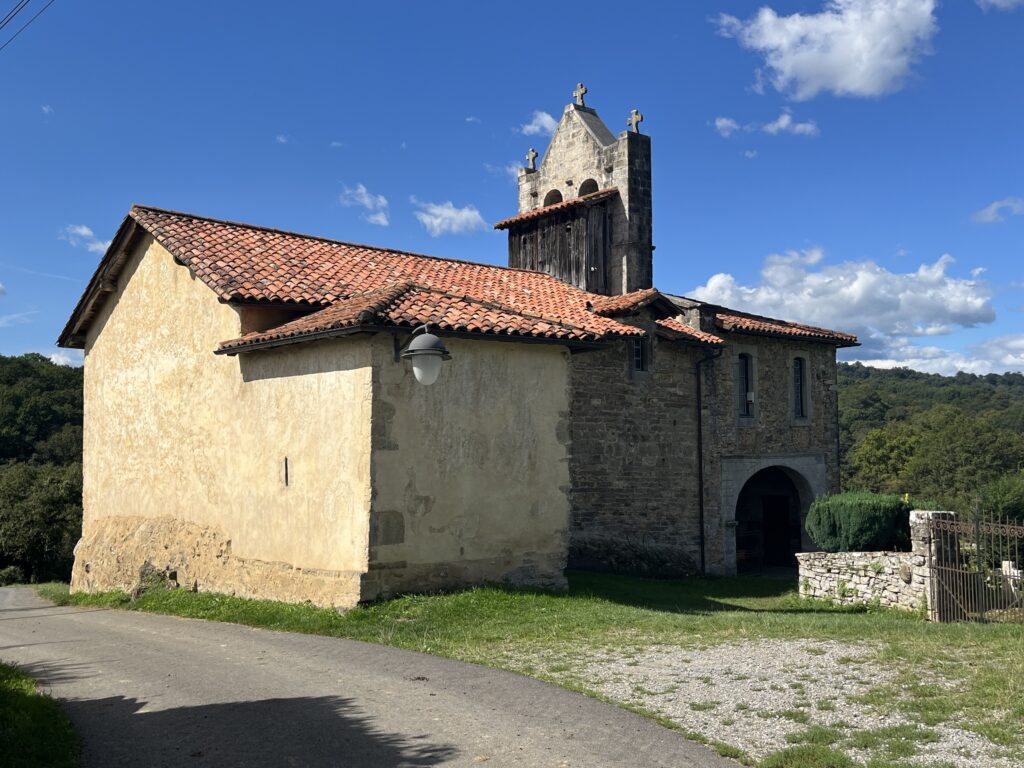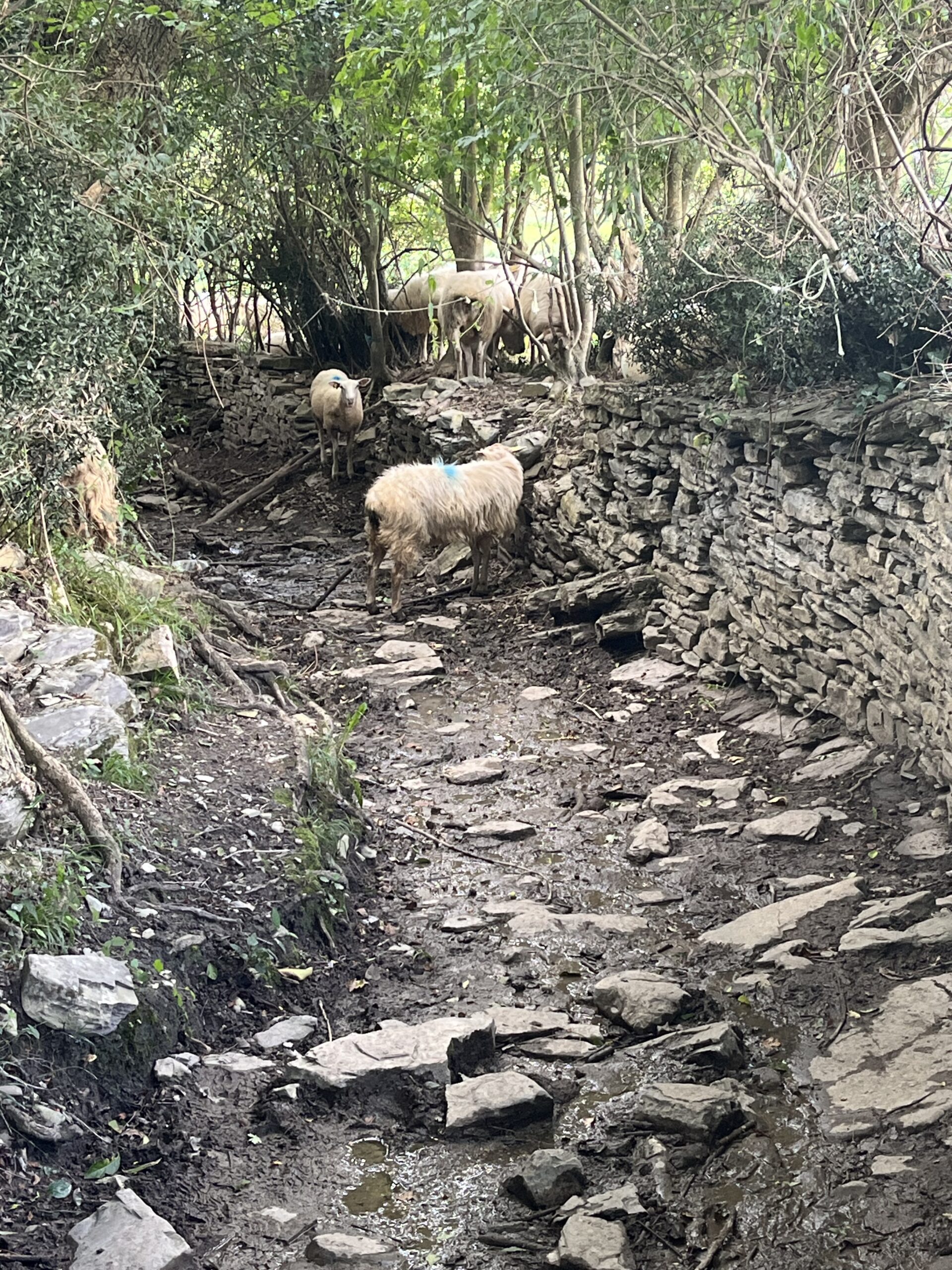Via Podiensis: Where Many Paths and Errands Meet
Throughout the course of my pilgrimage in France, the gîtes communal – that is, dormitory style accommodations provided by the village or town – have always been my last option. I much prefer the personal touch and warmth that you feel in a private gîte. Obviously, I’ve stayed in my fair share of gîtes communal regardless. You take what you can get sometimes.
Last night’s accommodation, at the gîte communal in Aroue, was a whole different experience. It’s operated by a couple, François and Melanie, and it’s run exactly as though it were a private gîte. They were welcoming and accommodating – I suspect this has something to do with the fact that François has walked three different Caminos into Santiago over the years, and he understands the needs of pilgrims.
I cannot say enough good things about their gîte and their hospitality. And dinner last night was superb. I ate a little too much, perhaps, and felt a little bit like a beached whale afterwards. But it was the best meal I’ve had in a gîte in weeks.
François gave us a tour of the church, which was originally constructed in the 11th or 12th century. Literally the only part of the original church that remains is the lintel above the sacristy door. This displays Adam and Eve in the garden, an unknown bishop in a miter, the three magi (or possibly the Trinity, scholars disagree), and a tableau of Santiago Matamoros.
The church has been destroyed several times, most recently in the religious wars of the 16th century, and has constantly been rebuilt.
He then took us down the block to a pelota court for an explanation of the game of Basque pelota. It turns out one of the reasons I could never figure out the rules is that there are four different ways of playing it, further divided into a total of 14 different varieties.
This morning I actually breakfasted with the rest of the pilgrims. This is supposed to be one of the most beautiful sections of the entire pilgrimage in France, and I’d hate to miss it in the dark.
It was cool enough that I wore my fleece when I started at about 7:45 AM. The high today was about 74°. Some big hills today as the Camino seriously starts to climb into the Pyrénées, so this was practically perfect weather. The sky was absolutely gorgeous when I left the gîte, the early morning clouds over the Pyrénées lit by the sunrise in the east. it looked like something out of a Maxfield Parrish painting.
I had refilled my food stash in anticipation of there not being much support today. Consequently my pack was a little heavier than it had been in previous days. I was also carrying an extra water bottle.
There’s a rule of thumb on the Camino – not a hard and fast rule by any means – that your pack shouldn’t weigh more than 10% of your own body weight. Given how overloaded my pack currently was, and the fact that I probably lost 10 pounds or more in the previous month, I’m pretty sure I was in violation.
I started out with a little busy two-lane roadwalking just to get the blood pumping. Just outside town, the Camino turned into farm country, which was something of a relief even if it was still technically roadwalking.
Interestingly, the trail markings this morning started out not the normal red and white blaze of the GR 65, but a new blue and yellow blaze for the Camino de Santiago. After just a few kilometers, though, they reverted to the old red and white.
The Camino wound up and down hills through a beautiful woodland, occasionally passing near or through wide, hilly meadows. At the top of that first hill, the fleece came off.
Though this land has been under the dominion of humans for tens of thousands of years, it retains a certain wildness, a sort of shaggy personality that I think Professor Tolkien would have loved.
Gradually, the Camino transitioned to more and more meadow and farmland, and often on the tops of nearby hills I would see farmsteads in what I was now coming to recognize as typically Basque architecture. After the earlier woodlands, I was very much put in mind of landscapes from The Hobbit and The Lord of the Rings, and for much of the morning I was humming (or even singing) a version of “Bilbo’s Old Walking Song”.
What about 9:10 AM, the Camino finally turned down a road of gravel and loose stone. For the rest of the day, the Camino would alternate between gravel, dirt, asphalt, and even sand. Quite an improvement over the past week!
There were echoes of the past weeks on the Camino: a cornfield, some fields of dying sunflowers. But ever the Way wound towards the mountains, towards the next stage of this great pilgrimage. It really did feel like I was in the closing chapters of one book, and getting ready to pick up the next.
At about 9:30 AM, big fat raindrops started falling. They were so intermittent, though, I didn’t even bother to put the rain cover on my back. The sky cleared up within just a few minutes. Or, perhaps, I walked out from under the rain cloud.
I had seen several raptors this morning, but at one point I turned around, and over a distant hill I could see dozens of them circling. It was an awesome sight. I tried to take a photo, but I’m sure they’re just little black dots.
I entered the utterly charming Basque village of Larribarre at about 10:20 AM. Unfortunately, the village church was locked. Nevertheless, I prayed for the intentions of the Camino outside.
Some time after the village, the Camino turned down a dirt and stone path under tree cover. I don’t know if it was my imagination, but it definitely feels like I’d been constantly climbing for quite some time. And now it suddenly got a lot steeper. For the first time in ages, I was doing what Francine likes to call “walking up the Dragon’s back” – upslope on bare rock outcropping.
Eventually, the path leveled out and ran for a while, once again a mixture of dirt and stone. it emerged at a little village and onto asphalt once more.
And it was here, at 11 AM, that my journey on the Via Podiensis ended, for here I arrived at the Stèle de Gibraltar.
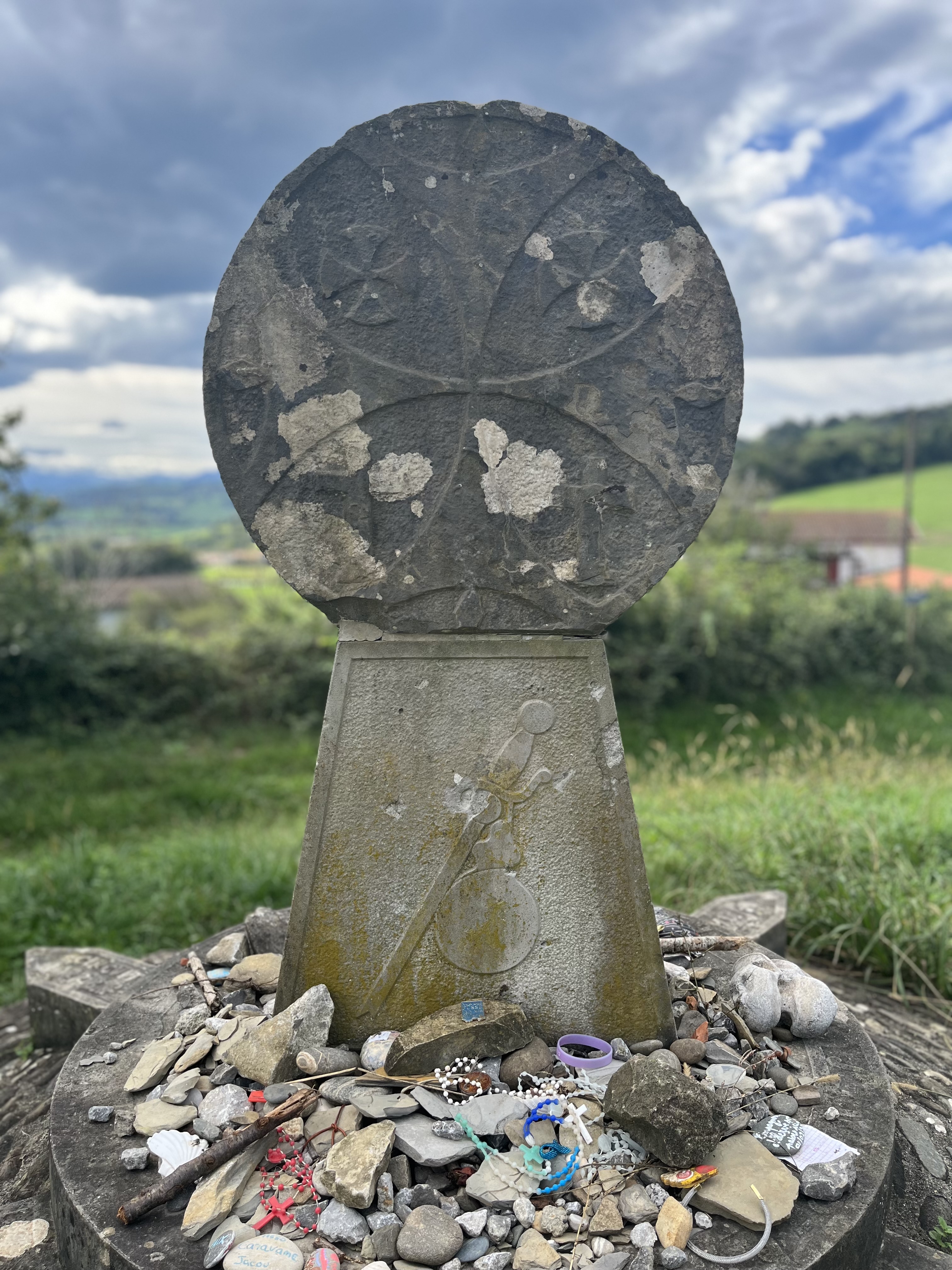
There are four major pilgrimage routes through France, and three of them converge at this marker. Pilgrims walking from Paris, from Vézelay, and from Le Puy-en-Velay all join together here, and from here they all walk together into Spain.
I suppose, technically, this is where the Camino Francés begins.
Note that for the sake of clarity, I will continue to label these blog entries as “Via Podiensis”, all the way to Santiago.
Once more, I was reminded of “Bilbo’s Old Walking Song”:
The Road goes ever on and on
Down from the door where it began.
Now far ahead the Road has gone,
And I must follow, if I can,
Pursuing it with eager feet,
Until it joins some larger way,
Where many paths and errands meet.
And whither then? I cannot say.
After spending a few moments at the marker, I hastened on. And almost immediately, I came to another wicked steep hill of crumbling stone. The climb took ages, partially because I kept stopping to admire the panoramic view of the valleys below me. It was stunning. Absolutely unforgettable.
The Camino continued on the top of a windswept ridge at a much more moderate climb until it reached a little chapel at the very top. I prayed here for the intentions of the Camino.
And then I sat on a nearby bench and ate my lunch. This turned out to be slightly problematic, as the wind was fierce and never stopped. The sandwich and the apple were no problem, but I didn’t open my chips because I was pretty sure they would just fly way.
There was a little group of pilgrims picnicking up there with me.
After lunch, it became clear that the intention was now to walk down the other side of the ridge. Although the scramble down was definitely hard on the knees and ankles, it wasn’t nearly as long as the climb up had been. The Camino then continued on a comfortable dirt road between open meadow land on one side, and trees on the other.
The downslope soon continued, but it was much more moderate than before. During the long downhill track, the Camino moved through scrub land before joining a paved road that descended through forest and meadow before reaching the village of Harambeltz.
There I arrived at the iconic 12th century chapel of Saint Nicolas, all that remains of a former priory and hostel. Unfortunately, it was locked. Nevertheless, I prayed for the intentions of the Camino in what was sort of an open narthex, and I took a photo through the keyhole.
Then it was back to the forest road, which was now going uphill. This eventually joined a more substantial road, and once more I was out into the open country side. Oh the views! Absolutely gorgeous.
After just a couple more ups and downs, I came to a rocky and muddy path under a tunnel of trees that involved sheep dodging, a sport which prior to now I had been thoroughly unfamiliar.
Eventually I emerged on a path with marginally less mud and far fewer rocks, trees, and sheep. This brought me into an extended farmstead, followed by one last hill. Or so I thought.
At about 1:50 PM, I arrived at today’s destination, the village of Ostabat-Asme – Izura-Azme for you Basque out there.
However, my gîte was another 1.2 km past the village. I sat for a while with some pilgrims from the Netherlands and Belgium at a closed outdoor café.
I went a little out of my way to pray at the village church, the first open church of today. It was built in the 19th century in a sort of Romanesque revival style. However, some of the statuary and the altars are much older, probably Baroque. There are also three bizarrely amateurish paintings in the sanctuary above the high altar that I just have no words for.
As I was leaving, the storm clouds again were threatening, but by the time I arrived at my gîte the threat had passed.
And of course, my gîte was at the top of a hill.
Date: 18 September 2023
Place: just past Ostabat-Asme / Izura-Azme
Today started: Aroue-Ithorots-Olhaïby
Today’s Photos!
